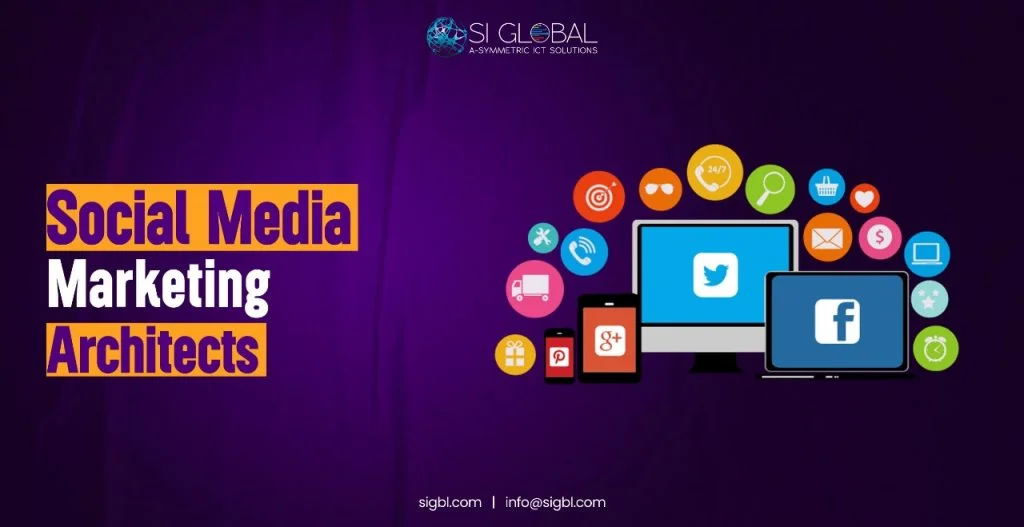In today’s digital age, social media has become a pivotal tool for businesses across all industries, including architecture. For architects, leveraging social media marketing effectively can open doors to new opportunities, enhance visibility, and foster client relationships. Here’s how social media marketing can benefit architects, how they can leverage these platforms, and a comprehensive strategy to make the most of social media.
The Benefits of Social Media Marketing
-
Increased Visibility and Brand Awareness
Social media platforms like Instagram, LinkedIn, and Facebook offer architects a stage to showcase their work to a global audience. Architects can significantly increase their visibility by sharing high-quality images of projects, behind-the-scenes content, and industry insights. Consistent posting and engagement can help establish a solid online presence, making it easier for potential clients to discover their services.
-
Building a Professional Network
Platforms like LinkedIn are particularly valuable for networking with industry professionals, potential collaborators, and clients. Engaging with industry groups, participating in discussions, and sharing expertise can position architects as thought leaders and trusted advisors. This networking can lead to valuable partnerships and referrals.
-
Driving Engagement and Client Interaction
Social media allows architects to interact directly with their audience. Responding to comments, answering queries, and conversing can build trust and rapport with potential clients. This level of engagement can lead to stronger relationships and a better understanding of client needs and preferences.
-
Showcasing Expertise and Credibility
Sharing case studies, client testimonials, and project highlights on social media can demonstrate an architect’s expertise and build credibility. Educational content, such as tips on design trends or sustainable architecture, can further establish the architect’s authority in their field.
-
How Architects Can Leverage Social Media
1. Choose the Right Platforms
Not all social media platforms are suitable for every architect. Instagram and Pinterest are excellent choices for visual-heavy content. LinkedIn is ideal for professional networking and sharing industry insights. Facebook can be used for broader engagement, while Twitter can help with real-time updates and conversations.
2. Create a Content Strategy
A well-defined content strategy is crucial. Architects should plan a content calendar that includes a mix of project showcases, industry news, behind-the-scenes looks, and client testimonials. Regularly updating content and maintaining consistency in posting will keep the audience engaged and interested.
3. Use High-Quality Visuals
Architecture is inherently visual, so leveraging high-quality images and videos is essential. Before-and-after photos, 3D renderings, and project walkthroughs can captivate viewers and highlight the architect’s skills and creativity. Invest in professional photography or design tools to ensure that visuals are polished and appealing.
4. Engage with the Community
Actively engaging with the Community can foster meaningful connections. Respond to comments, participate in relevant discussions, and share content from other industry professionals. Engaging with followers and peers boosts visibility and demonstrates the architect’s commitment to the industry.
A Comprehensive Strategy to Leverage Social Media
1. Define Clear Objectives
Start by defining what you want to achieve with social media marketing. Objectives could include increasing brand awareness, generating leads, or building a professional network. Clear goals will guide your content and engagement strategies.
2. Identify Your Target Audience
Understanding your target audience is crucial. Determine who your ideal clients are, what platforms they use, and what type of content they engage with. Tailoring your social media efforts to meet the preferences and needs of your audience will make your campaigns more effective.
3. Develop Engaging Content
Create content that resonates with your audience. Share project updates, client success stories, and industry insights. Use storytelling to make your content compelling and relatable. Incorporate calls to action to encourage engagement and drive traffic to your website.
4. Monitor and Analyze Performance
Regularly monitor your social media performance to assess the effectiveness of your strategy. Use analytics tools to track metrics such as engagement rates, follower growth, and website traffic. Analyze this data to identify what works well and what needs adjustment.
5. Adapt and Evolve
Social media trends and algorithms are constantly evolving. Stay informed about changes in social media platforms and adjust your strategy accordingly. Continuously seek feedback and be open to experimenting with new approaches to keep your social media presence dynamic and relevant.
Conclusion
Social media marketing offers architects a powerful platform to enhance their visibility, build a professional network, and engage with potential clients. By adopting a strategic approach and leveraging the unique strengths of different platforms, architects can effectively showcase their work, establish their expertise, and drive business growth. With a well-planned strategy and consistent effort, social media can become a valuable asset in any architect’s marketing toolkit.


